Tepezcohuite For Skin: Benefits, How To Use, & Side Effects
Experience the magic of this mystical ingredient overnight and marvel at the results.

Image: Shutterstock
After Salma Hayek revealed Tepezcohuite as her secret anti-aging and skin care ingredient, it has gained worldwide attention. Crushed Tepezcohuite bark was used by Mayan healers for its “magic effects” of treating burns and healing wounds without leaving scars. Many became intrigued with using tepezcohuite for skin regeneration and rejuvenation, and minimizing aging signs.
Tepezcohuite is a tree native to South America. The Mayans used the powdered bark of the tree to treat skin lesions. It is popularly used to treat burns, improve wrinkles, fade stretch marks, manage acne, and promote hair growth in Mexico.
However, what does science say about the claimed benefits of tepezcohuite? Read on to learn the truth about tepezcohuite, its benefits, and its risks.
 Know Your Ingredient: Tepezcohuite
Know Your Ingredient: TepezcohuiteWhat Is It?
The extract of a perennial tree with therapeutic properties
What Are Its Benefits?
It mainly helps with wound healing and may minimize pigmentation, premature signs of aging, and skin inflammation caused by acne.
Who Can Use It?
Anyone can use it as it is safe for all skin types, including sensitive skin.
How Often?
Follow the instructions on the package for topical products or speak with the doctor to determine the frequency.
Caution
Pregnant and lactating women should avoid using it. Oral intake may also cause adverse effects.
In This Article
What Is Tepezcohuite?

Tepezcohuite is a perennial tree that grows in Brazil and Mexico. It is also popularly known as Mimosa tenuiflora, mimosa hostilis, calumbi, jurema preta, and binho de jurema. The extract of this Mexican herb is used in many traditional remedies, medicines and cosmetic formulations. It contains high levels of tannins, shows excellent therapeutic properties, and is a potent antimicrobial ingredient (1).
 Did You Know?
Did You Know?Tepezcohuite is a lesser-known organic ingredient that is increasingly getting popular for its amazing anti-aging properties. Read on to know all the benefits of tepezcohuite for your skin.
Key Takeaways
- Tepezcohuite, also known as calumbi, is a tree native to Mexico and Brazil.
- It has been used for thousands of years to treat various skin problems.
- Reducing inflammation and slowing down the aging process are some of the benefits of using tepezcohuite.
- Pregnant women and lactating mothers should avoid using tepezcohuite.
Benefits Of Tepezcohuite For Skin
Note:
Despite claims that tepezcohuite can treat aging, acne, and psoriasisi A chronic skin condition characterized by itchy, scaly rashes, usually on the knees, elbows, trunk, and scalp. , no research trials are available on the subject. Evidence regarding the efficacy of this ingredient is anecdotal.
1. Wound Healing
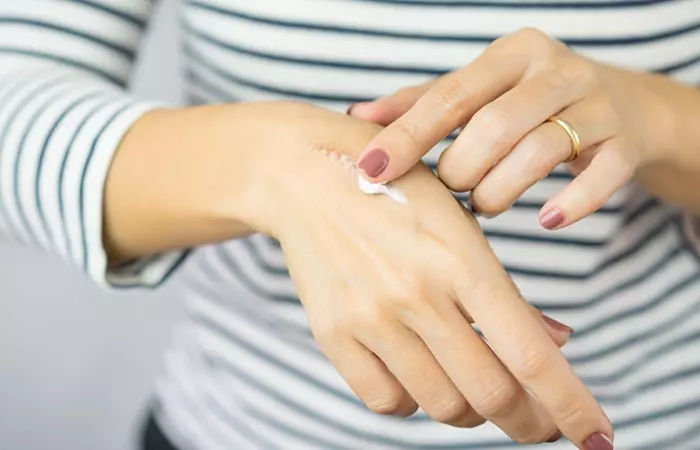
Tepezcohuite extract may help manage inflammation, promote fibroblast (collagen-producing cells) proliferation to heal wounds (2). It contains compounds like saponinsi Diverse and complex plant compounds found in all legume cells that form soapy foam when mixed with water. , tanninsi Chemicals found in certain plants and foods, medicines, fabrics, and ink that are also being tested for preventing cancer and heart issues. , and flavonoids, known to improve skin health and rejuvenate it. The direct application of the powdered bark can promote skin regeneration and help treat skin burns and wounds (1), (3).
2. Anti-Aging

Tepezcohuite contains flavonoids, which are naturally occurring antioxidants that protect the skin from infection and improve its health. Flavonoids have anti-inflammatory and photoprotective properties and can help minimize pigmentation and slow down premature aging (4).
Anecdotal evidence suggests that applying tepezcohuite bark powder or plant extracts to the skin can prevent moisture loss, leading to plump, radiant skin. Human trials are yet to be conducted to study its effects on the skin, meaning we need more evidence.
 Fun Fact
Fun Fact3. Antibacterial
Tepezcohuite has antimicrobial and antibacterial properties and is beneficial in treating leg ulcers and skin lesions (1). The tannins and flavonoids are responsible for the ingredient’s antibacterial benefits (5).
However, this claim is not supported by concrete research evidence and needs to be studied further for more insight.
4. Anti-Inflammatory

Tepezcohuite extract has anti-inflammatory benefits through their naturally produced tannins, and its strong antioxidant properties can help reduce skin inflammation caused by acne. It can be combined with other known herbs for acne, like witch hazel, lavender, or tea tree oil for an effective home remedy. Tepezcuhuite may also neutralize free radicalsi Unstable molecules created during cell metabolism that can damage DNA, lipids, and proteins and increase the risk of disease. , that are one of the main causes of premature skin aging.
5. Pain Reliever
Tepezcohuite extract, derived from the bark of the Mimosa tenuiflora tree, has been traditionally used for its analgesic properties. Tepezcohuite is rich in tannins, flavonoids, and various active compounds, and is believed to possess natural pain-relieving qualities. It works by inhibiting the production of certain enzymes that contribute to pain signaling.
A study conducted on animals to assess the pain-relieving and anti-swelling effects of tepezcohuite bark extract found that it could reduce pain and swelling effectively (1). However, further research is needed to fully understand its analgesic effects, but the findings point to its potential in the realm of pain management, providing hope for individuals looking for non-conventional pain relief solutions.
 Quick Tip
Quick TipFrom tepezcohuite creams and lotions to soaps – you can find this ingredient in many common skin care products. Next, let’s understand the best way to use these products.
How To Use Tepezcohuite Products

It is best to follow the manufacturer’s instructions while using a skin care product with tepezcohuite. Here’s a step-by-step guide to help you make the most of tepezcohuite in your skincare routine:
- Start by cleansing your skin well to remove any dirt or oil.
- Gently apply a thin layer of tepezcohuite cream or ointment to areas needing extra care and leave them overnight. If you use ointments, apply them only to the affected area.
- If you need to use other products over it, let it sit for about 15 minutes to fully absorb before using different products.
- Be extremely cautious before using any product with tepezcohuite. Consult a doctor and do a patch test beforehand to avoid skin reactions.
Side Effects Of Tepezcohuite
Research is extremely limited about tepezcohuite and its effects on the skin. Therefore, there is no such information regarding its topical side effects.
There is only limited evidence regarding its oral consumption. However, animal studies demonstrated that consuming the seeds and fresh leaves might result in abnormalities in the fetus or even embryonic death (6), (7). It also contains psychoactive compoundsi Substances that, when consumed, alter mental activity, such as perception, consciousness, cognition, or emotions. that may be of concern.
Since there is not enough evidence regarding potential negative effects on our health, it is wise to avoid using it on the skin and consuming it as an herbal medicine. Do not use it if you are pregnant or lactating.
If you are using tepezcohuite cream or ointment, follow the doctor’s guidelines.
How Often Can You Use Tepezcohuite?
There is no evidence to determine the appropriate use of tepezcohuite and ascertain its correct dosage. For topical creams and serums, follow the guidelines on the package or consult your doctor to know the frequency of usage.
Infographic: Top 4 Advantages Of Using Tepezcohuite For The Skin
While tepezcohuite was used by ancient Mayans to treat skin lesions, today, it is used to treat burns, slow down signs of aging, and manage acne due to its skin-regenerating and anti-inflammatory properties. We have rounded up the various ways in which this therapeutic plant can benefit your skin. Check out the infographic below to know more!
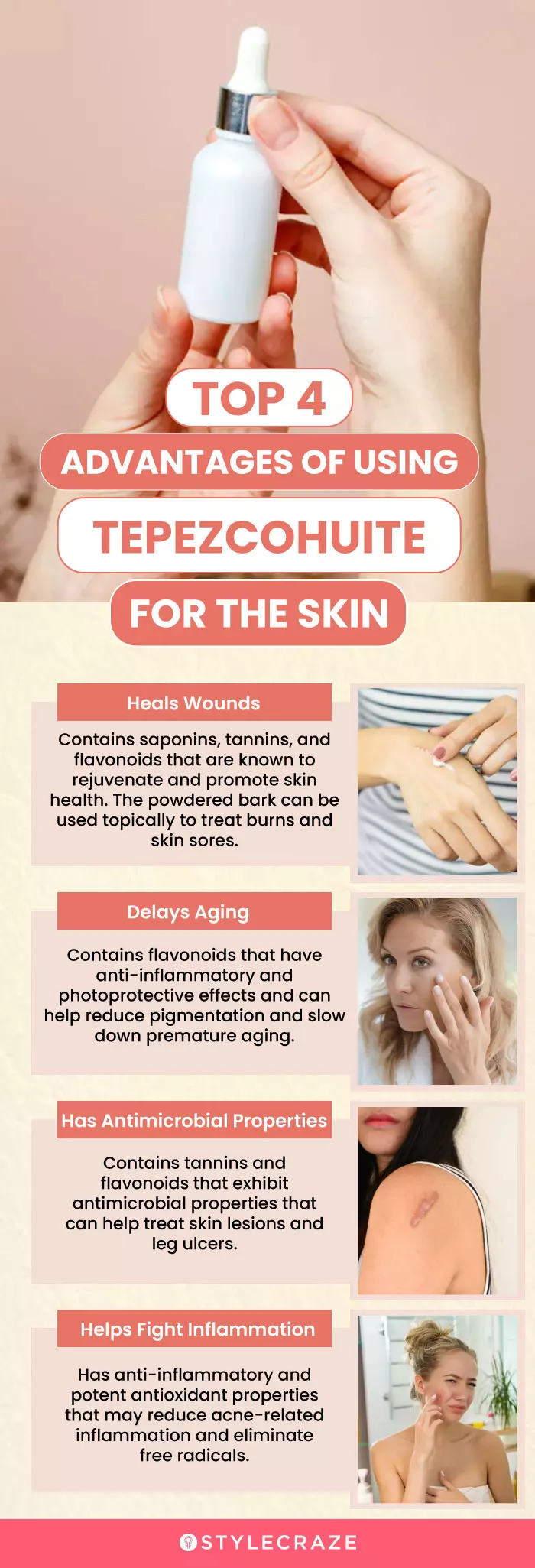
Illustration: StyleCraze Design Team
Tepezcohuite for skin is steadily gaining popularity as an anti-aging ingredient in skin care products. It is commonly used for medicinal purposes to heal burns and wounds. Tepezcohuite has skin-regenerative qualities and is said to have anti-aging benefits. However, more empirical data is needed to confirm its efficacy and safety in dermatology. If you are curious about this plant-based ingredient and want to try it, consult a doctor first and understand its health implications. Use this natural remedy only under medical supervision or as suggested by the doctor. This will help you avoid any side effects.
Frequently Asked Questions
What skin types can benefit from tepezcohuite?
Tepezcohuite is generally suitable for most skin types, especially dry, irritated, or sensitive skin. Still, as mentioned before, it’s best to do a patch test first or take your doctor’s advice before incorporating it into your daily routine.
Does tepezcohuite help with scars?
Yes. Tepezcohuite is packed with beneficial compounds like antioxidants that may help boost your skin’s regeneration properties and heal scars.
Is tepezcohuite good for eczema?
Yes. Tepezcohuite contains anti-inflammatory agents that may help reduce any inflammation related to eczema.
Can Tepezcohuite be used in combination with other skin care products?
You can use a Tepezcohuite cream after an AHA or BHA peel to soothe your skin, but it is best to consult a specialist before using it with other ingredients.
Is Tepezcohuite safe for long-term use on the skin?
Anecdotal evidence suggests that Tepezcohuite does not cause any adverse effects on the skin after long-term use, but it is best to consult with a doctor before using it daily.
Illustration: Tepezcohuite For Skin: Benefits How To Use And Side Effects

Image: Stable Diffusion/StyleCraze Design Team
Explore the benefits of using tepezcohuite for your skin in this captivating video. Discover the potential wonders this natural ingredient can add to your skincare routine.
References
Articles on StyleCraze are backed by verified information from peer-reviewed and academic research papers, reputed organizations, research institutions, and medical associations to ensure accuracy and relevance. Read our editorial policy to learn more.
- Antinoceptive and Anti-inflammatory Activities of the Ethanolic Extract
Fractions and Flavones Isolated from Mimosa tenuiflora (Willd.) Poir (Leguminosae)
https://pubmed.ncbi.nlm.nih.gov/26954375/
- Characterization and evaluation of a novel O-carboxymethyl chitosan films with Mimosa tenuiflora extract for skin regeneration and wound healing
https://journals.sagepub.com/doi/full/10.1177/0883911519885976?journalCode=jbca - Chitosan /Mimosa Tenuiflora films as potential cellular patch for skin regeneration
https://www.researchgate.net/publication/308724960_Chitosan_Mimosa_Tenuiflora_films_as_potential_cellular_patch_for_skin_regeneration - Recent advances in topical delivery of flavonoids: A review
https://pubmed.ncbi.nlm.nih.gov/30682442/ - Mimosa tenuiflora’s antimicrobial activity on bacteria and fungi from medical importance: an integrative review
https://pubmed.ncbi.nlm.nih.gov/33885936/ - Teratogenicity of Mimosa tenuiflora seeds to pregnant rats
https://pubmed.ncbi.nlm.nih.gov/18078971/ - Mimosa tenuiflora as a cause of malformations in ruminants in the northeastern Brazilian semiarid rangelands
https://pubmed.ncbi.nlm.nih.gov/18039908/
Read full bio of Dr. Farhaad Riyaz
Read full bio of Ramona Sinha
Read full bio of Eshna Das
Read full bio of Shiboli Chakraborti










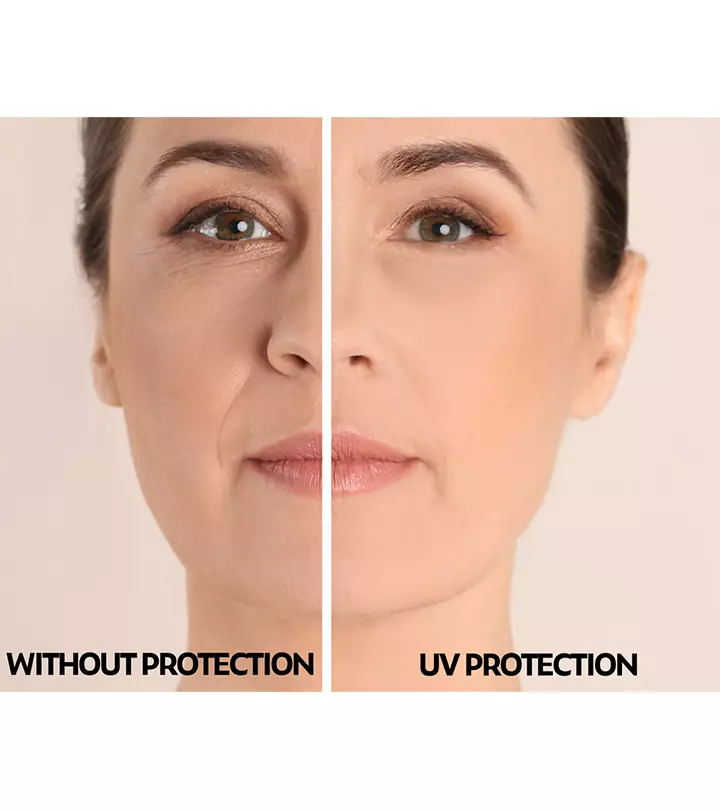







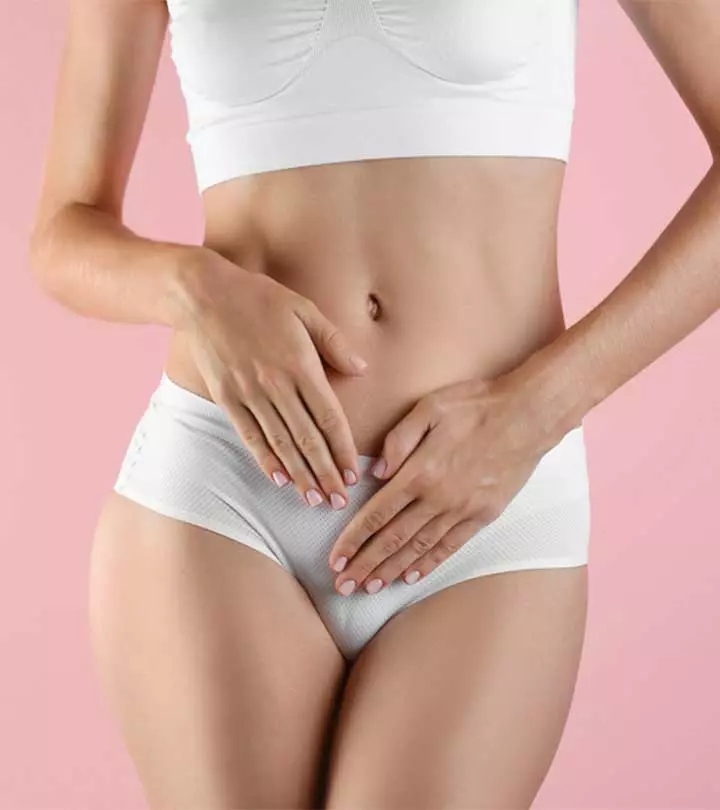
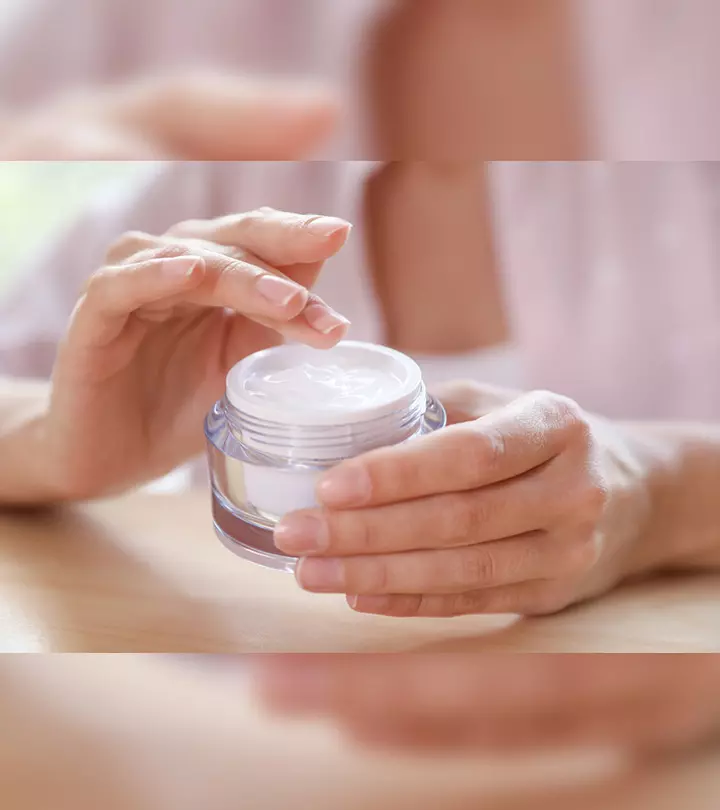




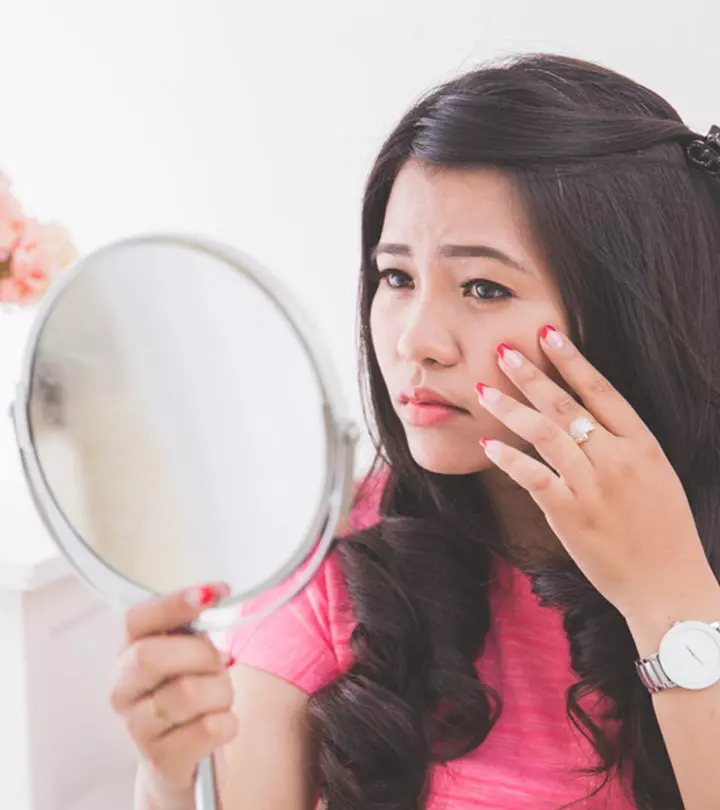
Community Experiences
Join the conversation and become a part of our empowering community! Share your stories, experiences, and insights to connect with other beauty, lifestyle, and health enthusiasts.